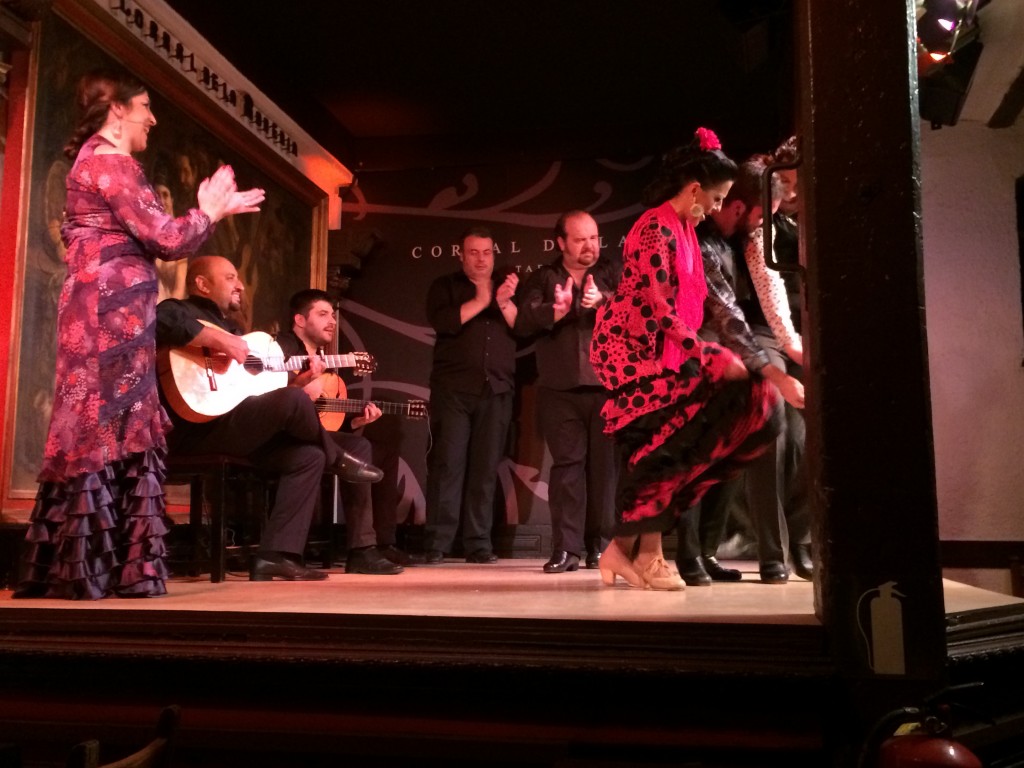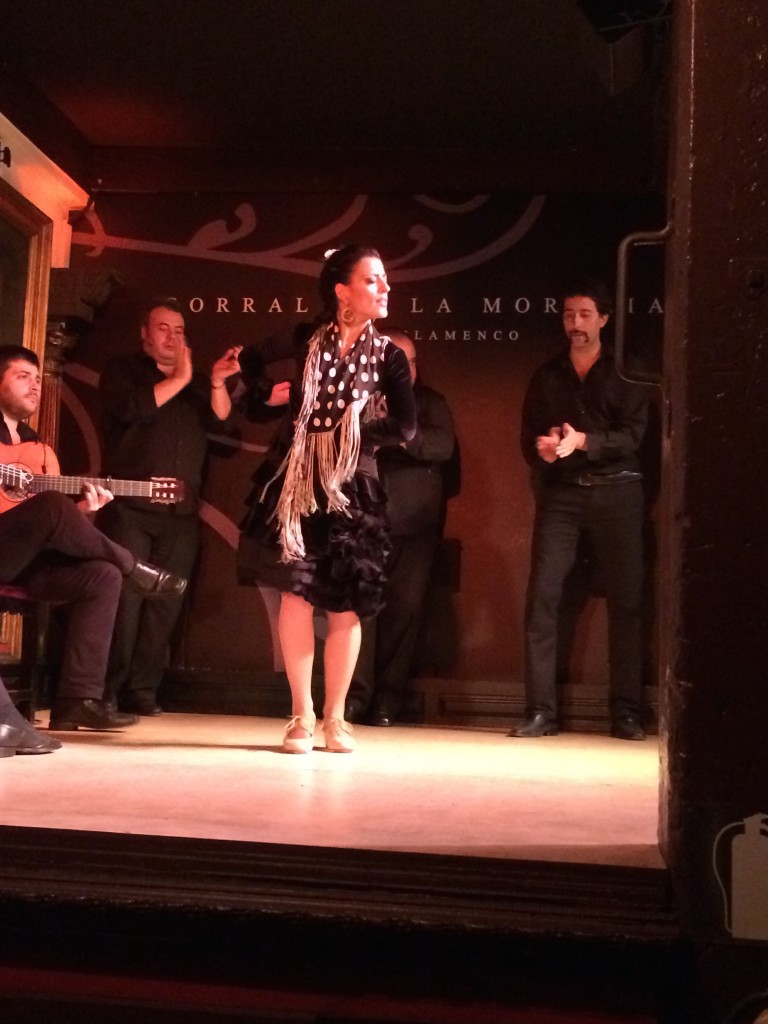While in Madrid this last December I saw my first live Flamenco show at Corral de la Morería. Coming from San Francisco, who has a very active Flamenco scene, I don’t think I even realized I had never seen it live until I got there. I have listened to Flamenco music and watched movies and videos but I’ve always been more interested in the Cante than Flamenco as a whole. This was a whole new experience! It’s true what they say, “live is always better”.
The set up on stage was 2 guitar players, 3 male singers who also did the clapping, 3 dancers (1 female and 2 male) and 1 female Cante who only sang 2 songs. The dancers opened and closed the show together but then took turns soloing during the rest of the show. I found Flamenco in it’s entirety to be so very complex. Together all the pieces/players and the timing is incredible. My impression was that the guitar is really your base for the song but then you add the clapping and singing, body percussion and the dancer’s stamping with her feet and WOW! I was pretty blown away by it. Another observation I had, though maybe I imagined it, was such a deep appreciation by everyone on stage for what the other one was doing. Together they all created the music. Sure, you could take out any one of them and still have Flamenco but somehow this felt special.
Being the nerd that I am, I tried to figure out the clapping during the show, I couldn’t! I watched and tried to replicate by hitting my leg under the table but they were all doing something different and the accents were never where I thought they should be. I thought if I could figure out the time signature then maybe I could figure out the clapping-again, no dice! I looked it up online the following day, turns out the time signature is 12/8 which I’m not very familiar with, and there are several different ways to accent depending on the Palo. What is a Palo, you ask? According to Wikipedia, Palos are Flamenco styles based on rhythmic pattern, mode, chord progression, stanzaic form and geographical origin. There are over 50 palos! Oh boy, so much to learn! Good thing I’ll be back in Spain in 2016 to see what else I can pick up.
Share with us your Flamenco experiences…


